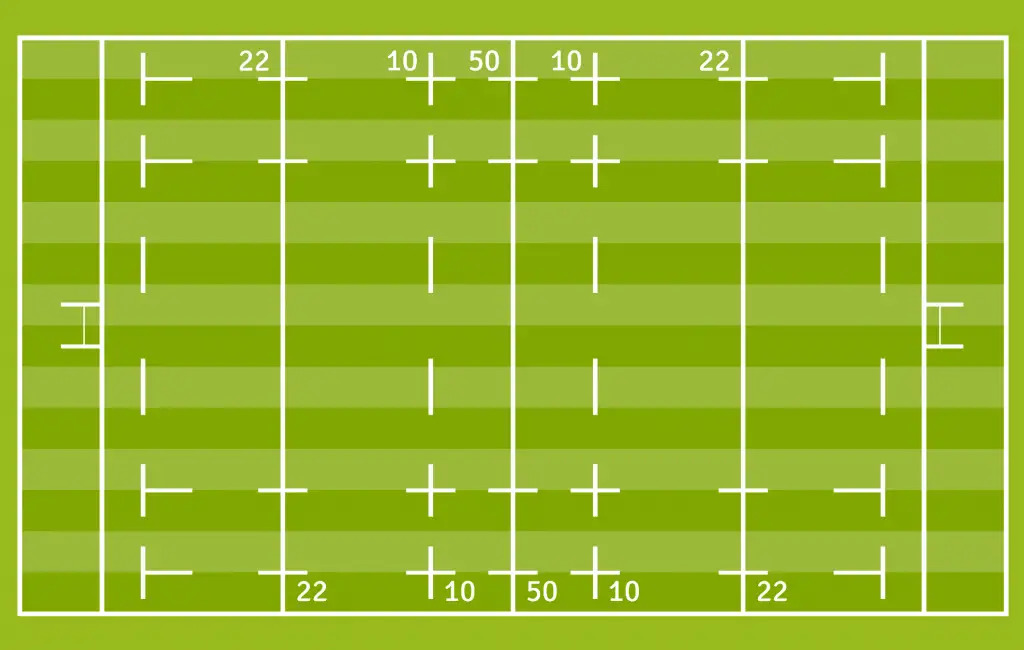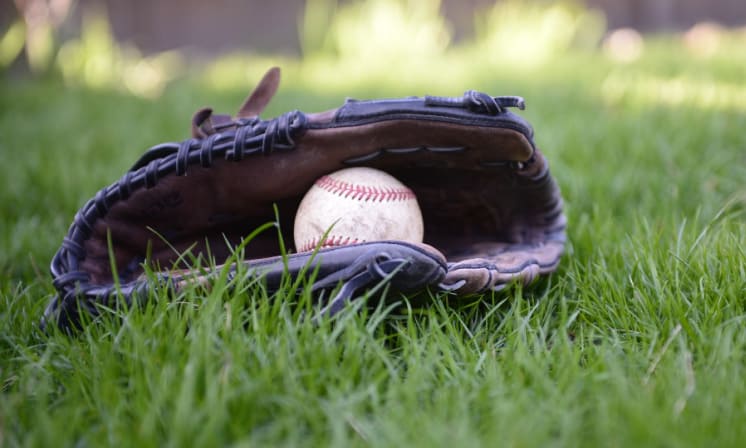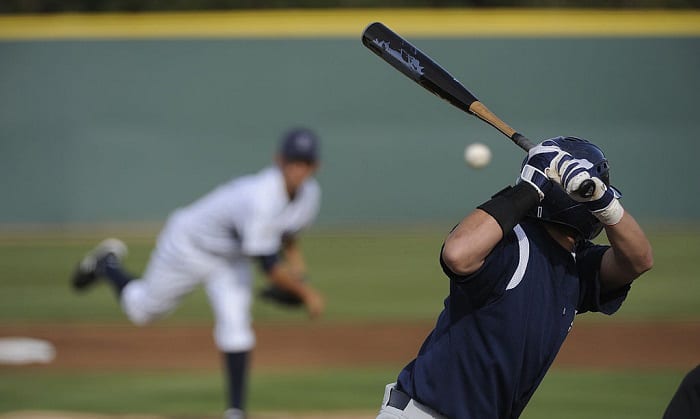How Big is a Rugby Field: Uncovering the Immense Dimensions

A rugby field is 100 meters long and 70 meters wide, with in-goal areas measuring 10 meters deep. Rugby field dimensions are standardized to promote fairness in the game and ensure a consistent playing surface for all teams.
The large size of a rugby field allows players ample space to exhibit their skills in running, passing, and scoring, making it a thrilling and dynamic sport to watch. The expansive green field is a battleground where teams compete fiercely to gain territory, showcasing teamwork, strategy, and physical prowess.
With its dimensions carefully regulated, the rugby field serves as the ultimate arena for athletes to engage in the fast-paced and exhilarating sport of rugby.

DIMENSIONS OF A RUGBY FIELD
Rugby is a popular sport known for its physicality, fast pace, and unique field dimensions. The dimensions of a rugby field are crucial to the game’s dynamics and provide a vast area for players to maneuver and execute strategies, making the game both challenging and exciting.
LENGTH AND WIDTH
The standard dimensions of a rugby field contribute to the game’s fast-paced and physically demanding nature. A regulation rugby field measures 100 meters in length and 70 meters in width, providing ample space for players to display their athleticism and skills. The expansive dimensions allow for dynamic plays and strategic maneuvers, adding to the sport’s allure.
GOAL POSTS
The goalposts serve as essential elements of a rugby field, defining the scoring area and adding an element of precision to the game. Positioned at each end of the field, the goal posts consist of two vertical posts with a crossbar. The H-shaped goalposts stand 5.6 meters apart, anchoring the intense gameplay and serving as focal points for scoring opportunities.
MARKINGS ON THE RUGBY FIELD
Rugby fields feature distinctive markings that dictate gameplay and field dimensions. Understanding the size of a rugby field is crucial for players and spectators alike.
TRY LINE AND DEADBALL LINE
The Try Line and Dead Ball Line on a rugby field mark the goal areas at each end of the pitch. Players aim to score tries by getting the ball grounded at or beyond the try line while remaining in play. The deadball line, on the other hand, marks the boundary beyond which the ball is considered out of play.
22-METER LINE AND HALFWAY LINE
The 22-meter Line and Halfway Line are crucial markings on the rugby field. The 22-meter line indicates the point from which a team takes a dropout after their opponents kick the ball out of bounds near the try line. The halfway line divides the field into two equal halves, serving as the center point of the pitch.
DIFFERENT SECTIONS OF THE RUGBY FIELD
The rugby field consists of different key sections that play significant roles in the game. Understanding the layout of a rugby field can enhance your appreciation for the sport. Let’s explore the various sections in detail:
IN-GOAL AREAS
The in-goal areas are the spaces located behind each goal line and are crucial for scoring points in rugby. Players aim to ground the ball within these areas to score a try. The in-goal areas are important for determining successful scoring attempts.
10-METER LINE AREAS
Located 10 meters from the halfway line, the 10-meter line areas are pivotal zones in a rugby field. Teams must adhere to regulations related to these areas during kick-offs and restarts. Proper positioning in the 10-meter line areas is critical for the game flow.

Comparison With Other Sports Fields
Rugby fields are known for their vast and expansive dimensions, making them quite unique compared to other sports fields. Let’s take a closer look at how the size of a rugby field compares to those of other popular sports, such as soccer and American football.
Soccer Field
A soccer field is typically rectangular in shape, with dimensions ranging from 100-130 yards in length and 50-100 yards in width. The specific size can vary depending on the level of play, but in general, soccer fields are smaller than rugby fields.
American Football Field
Unlike rugby and soccer, American football fields are laid out in a different manner, with distinct end zones at each end. The dimensions of an American football field measure 120 yards in length and 53.3 yards in width, making it similar in length but narrower than a rugby field.
Important Considerations For Field Maintenance
Maintaining a rugby field involves considering its size. The standard dimensions of a rugby field are 70 meters wide and 100 meters long, with in-goal areas measuring around 10-22 meters. Adequate field maintenance is crucial to ensure player safety and optimal game performance.
Maintaining a rugby field is essential to ensure a safe and enjoyable playing surface. Proper maintenance not only improves the longevity of the field but also enhances the overall quality of the game. To achieve this, there are a few important considerations that should be kept in mind:
Grass Length And Quality
The length and quality of the grass on a rugby field play a crucial role in ensuring optimal performance. It is recommended to keep the grass at a height of around 30 to 60 millimeters. This provides enough cushioning for the players while minimizing the risk of injuries. Additionally, regular mowing and trimming help maintain a consistent and uniform turf, allowing for a smooth and even playing surface for the players. Dense and healthy grass not only enhances the aesthetic appeal of the field but also improves player traction, reducing the chances of slips and falls.
Uniformity Of The Playing Surface
Another important aspect of rugby field maintenance is maintaining the uniformity of the playing surface. Uneven surfaces can lead to unfair advantages or pose safety risks for the players. To ensure a level playing field, regular rolling, and leveling techniques should be employed. Identifying and filling any depressions or potholes is crucial to creating a smooth surface that allows for consistent ball movement and fair play. Regular core aeration promotes better soil drainage and prevents soil compaction, which can greatly impact the uniformity of the field.
Regular Irrigation And Fertilization
In addition to maintaining grass length and uniformity, regular irrigation and fertilization also play a vital role in field maintenance. Providing the appropriate amount of water helps keep the soil moisture balanced and promotes healthy growth of the grass. Adequate fertilization ensures that the grass receives the necessary nutrients to stay lush and vibrant. It is important to follow a proper schedule for irrigation and fertilization based on the specific needs of the field and local climate conditions.
| Brief Summary: | Maintaining a rugby field is crucial for safety and optimal performance. Consider grass length, uniformity, irrigation, and fertilization. |
|---|---|
| Importance: | Proper field maintenance enhances player safety, improves game quality, and prolongs the life of the field. |
| Key Points: |
|
FREQUENTLY ASKED QUESTIONS ON (HOW BIG IS A RUGBY FIELD)
IS A RUGBY FIELD BIGGER THAN A SOCCER FIELD?
Yes, a rugby field is larger than a soccer field, with dimensions of about 100-144 meters long and 70-70. 5 meters wide.
HOW MANY PLAYERS ARE IN A RUGBY TEAM?
A rugby team typically consists of 15 players, divided into forwards and backs, each with different roles and responsibilities.
WHAT ARE THE MARKINGS ON A RUGBY FIELD?
A rugby field is marked with various lines, including touchlines, goal lines, halfway line, 22-meter line, and goalposts.
CAN A RUGBY FIELD BE USED FOR OTHER SPORTS?
Yes, a rugby field can be used for various other sports such as soccer, American football, and field hockey, with appropriate adjustments to the markings and goalposts.
CONCLUSION
The rugby field’s size plays a significant role in the dynamics of the game. Understanding its dimensions provides insight into the sport’s strategy and tactics. Whether you’re a player, coach, or spectator, knowing the size of the rugby field enhances the overall appreciation of this exhilarating sport.






